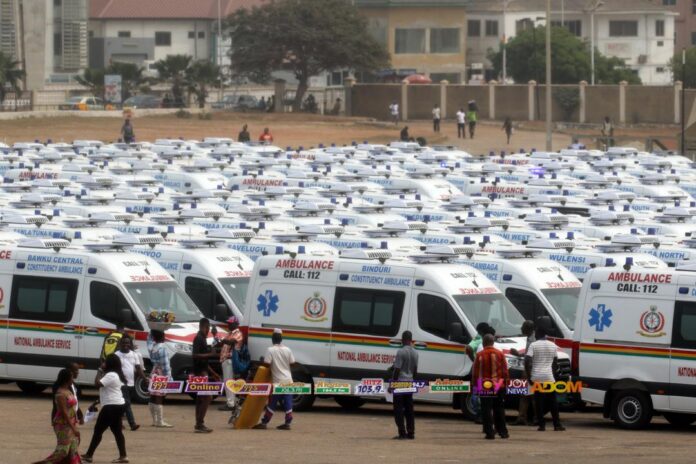The recent tragic explosion at Kasoa Buduburam, which resulted in the death of three people and over thirty casualties, has once again brought to light the vital role of emergency response services in mitigating disasters.
While attention has often been centered on the fatalities, the massive rescue and recovery efforts led by the National Ambulance Service (NAS) deserve significant recognition for their timely and effective response.
At the heart of this incident, the NAS demonstrated professionalism and dedication by swiftly arriving at the scene, providing urgent medical attention, and evacuating the critically injured to appropriate health facilities. In a country where emergency response systems have historically faced challenges, the NAS intervention in this situation provides a case study of how lives can be saved when an organized, timely, and well-coordinated emergency service is in place.
A Swift Response that Saved Lives
When the explosion occurred, chaos ensued, and the immediate aftermath could have been much more devastating if it weren’t for the swift action of the NAS. The ambulance service quickly arrived on the scene, assessing the victims, stabilizing those in critical condition, and safely transporting them to hospitals equipped to handle severe injuries. Their promptness not only saved lives but also prevented further complications for many of the survivors.
This is the critical yet often overlooked aspect of disaster management in Ghana—the essential role of pre-hospital care. The NAS isn’t just about transporting patients from one point to another; they provide immediate, life-saving interventions on the ground, stabilizing victims before they even reach a hospital. In the case of the Kasoa blast, early intervention undoubtedly played a key role in reducing the number of potential fatalities.
The Unsung Heroes of Public Safety
The focus after any disaster is often on the causes and the subsequent investigation, which often overshadows the critical interventions made in the heat of the moment. In the Kasoa Buduburam blast, while discussions have largely centered around safety lapses and the investigation into the explosion’s causes, the tireless efforts of the NAS have been conspicuously absent from public discourse.
The men and women of the NAS are trained to operate under intense pressure, often in high- stakes situations where every second counts.
During the Kasoa blast, their ability to manage a mass casualty situation, coordinate with other emergency services, and quickly dispatch victims to hospitals underlines the importance of their work. Without their intervention, the casualty figures could have been significantly worse.
Addressing Challenges and Strengthening Emergency Response
The Kasoa blast incident also exposes the challenges faced by Ghana’s emergency response system, which, despite the commendable efforts of the NAS, remains under-resourced.
The National Ambulance Service, though well-trained and highly professional, operates with limited equipment, personnel, and ambulances to serve a growing population. This strains their ability to maintain response times and reach all areas of the country, particularly in rural and densely populated regions like Kasoa.
The role of the NAS in the Kasoa blast should be a wake-up call for stakeholders to invest more in strengthening the capacity of emergency services in Ghana. Adequate resourcing of the NAS, including increased funding for ambulances, medical equipment, and personnel, is crucial in ensuring they continue to provide timely and effective care in future emergencies.
Lessons Learned: The Critical Need for Emergency Preparedness
As Ghana continues to develop, urbanization, industrial growth, and population density make the risk of accidents and disasters higher. The Kasoa explosion is just one of many potential future emergencies. The NAS’s response has shown that with the right tools and support, a well- coordinated emergency service can mitigate the impact of such disasters.
Beyond acknowledging the critical role of the NAS, there is also a need for greater public awareness and training in first aid and emergency response at the community level. While the NAS stands ready to assist, the first few minutes after an incident are often the most crucial for saving lives. Equipping the public with the knowledge to assist before emergency personnel arrive could make an enormous difference.
Conclusion
The Kasoa Buduburam blast has exposed the urgent need to recognize and support the National Ambulance Service’s role in disaster management. While the fatalities and injuries are tragic, the efforts of the NAS in responding swiftly, providing urgent care, and evacuating victims should not go unnoticed. As a nation, there is a need to provide the NAS with the resources they need to continue their life-saving work.
The time to invest in the NAS and Ghana’s broader emergency response infrastructure is now, before another tragedy strikes. We owe it to those who have been saved, and those who might yet be saved in the future, to ensure that the men and women on the front lines of disaster response have the tools, training, and support to perform their critical roles effectively.


